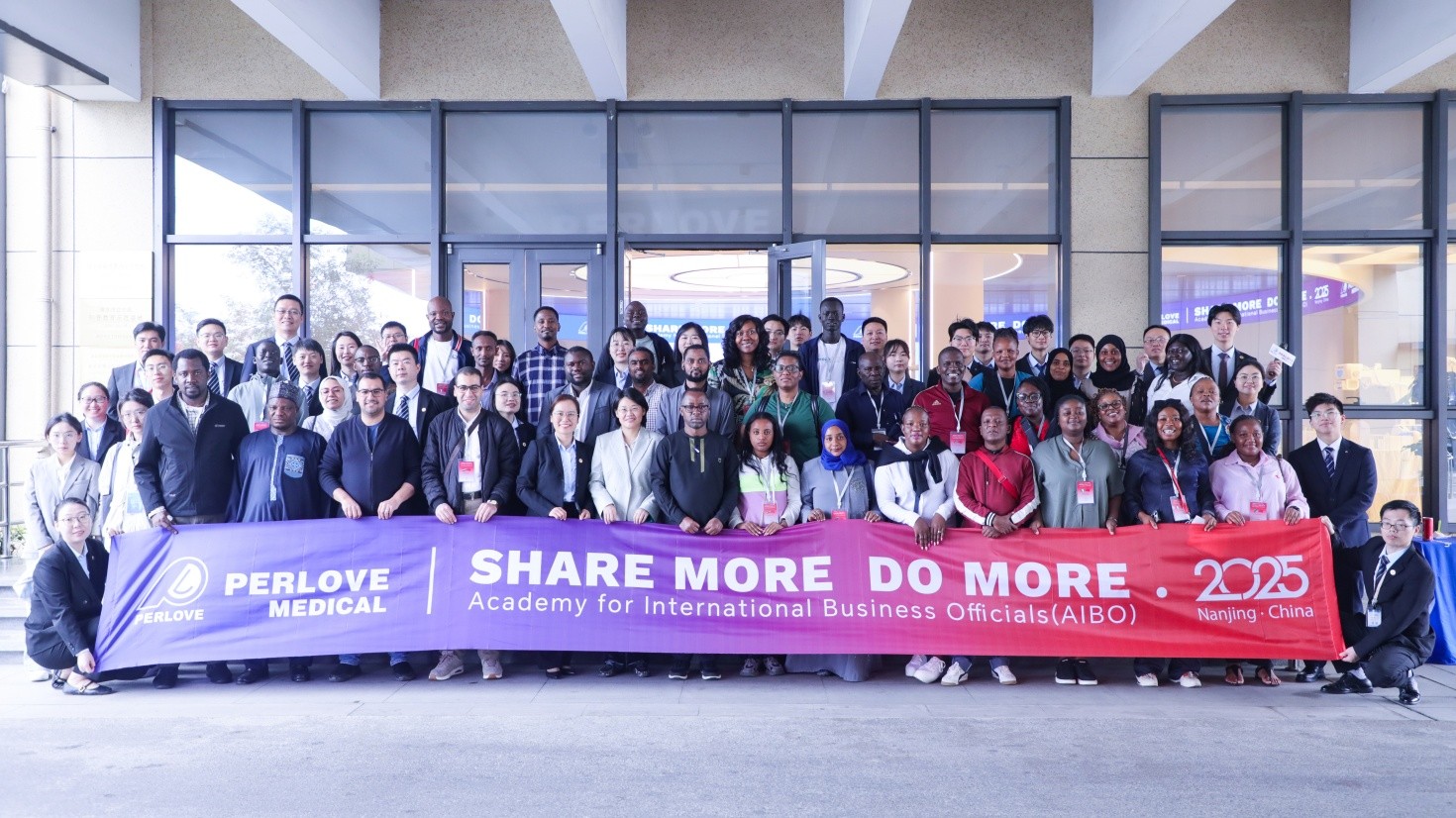News
2025-05-22 15:56:39 Views:130
Orthopedic Surgical Robot Helps 5-Year-Old Girl Straighten Her Spine!
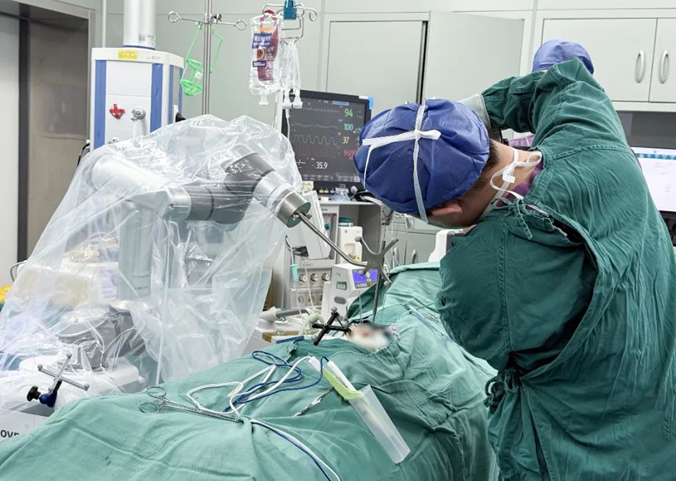
Recently, the orthopedic team at Children's Hospital of Nanjing Medical University successfully performed a scoliosis correction surgery for a 5-year-old girl with the assistance of the Perlove Medical’s orthopedic surgical robot. The surgery helped the young patient straighten her spine and stand tall again.
Patient Overview
Patient: Female, 5 years old
Clinical Symptoms: Asymmetrical back, uneven shoulders, scoliosis
Surgical Indication: Congenital hemivertebra deformity accompanied by scoliosis, which affects normal growth and development. Surgical correction was necessary. Early surgical intervention can effectively prevent deformity progression and improve prognosis.
Surgical Approach: Posterior hemivertebrectomy combined with short-segment fixation and fusion
Surgical Goals: Eliminate the deforming element, correct spinal deformity, restore spinal balance, and preserve the patient's growth potential
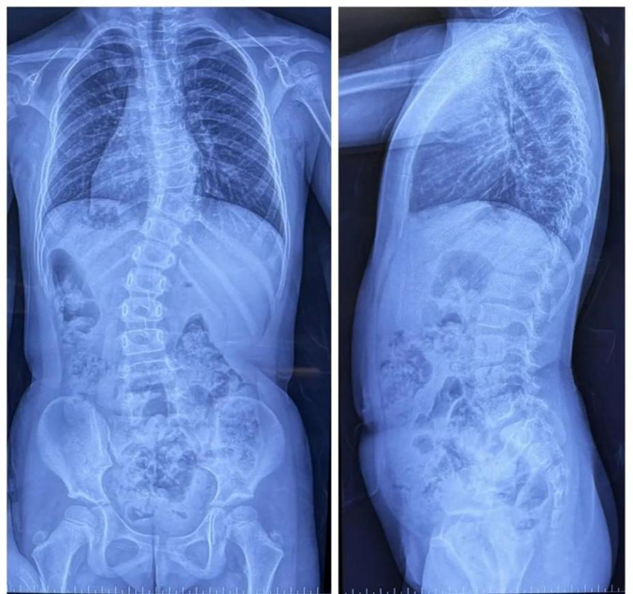
Preoperative AP and Lateral Views
As the patient was wheeled into the operating room, the lead surgeon faced an exceptionally challenging procedure:
Challenge 01:
The patient was only 5 years old, with a small skeletal structure and narrow pedicle channels, along with hemivertebra malformations. To avoid irreversible spinal cord injury caused by repeated punctures, surgeons had to place each pedicle screw correctly on the first attempt, with no room for adjustments. The percutaneous approach presented extreme technical difficulty, making screw insertion comparable to navigating blindly.
Challenge 02:
A 5-year-old's bone density is only about 20% of an adult's. Traditional screw placement methods often result in loosening. After resection of the T9 vertebra, short-segment fixation (T8–T10) was required. However, this demanded high biomechanical stability, and the soft pediatric bone increased the risk of internal fixation failure.
Challenge 03:
Radiation exposure is another major concern for parents. Children are more sensitive to radiation than adults, and such surgeries require repeated fluoroscoy imaging. How to minimize radiation exposure during surgery is a critical challenge in pediatric operations.
Children's Hospital of Nanjing Medical University successfully completed this highly complex surgical procedure through the integrated application of Perlove Medical's 3D C-arm and surgical robot, demonstrating optimal synergy between intelligent technology and surgical expertise.
01 Precision Navigation
During the surgery, the medical team used the Perlove Medical’s flat-panel 3D C-arm to acquire 3D and CT-like images of the patient, enabling comprehensive visualization of the pedicles. Guided by the robot's 3D planning system, the surgeon mapped each screw's ideal path and angle to achieve maximum screw purchase strength and improve spinal stability by accommodating the unique biomechanical properties of pediatric bone tissue.
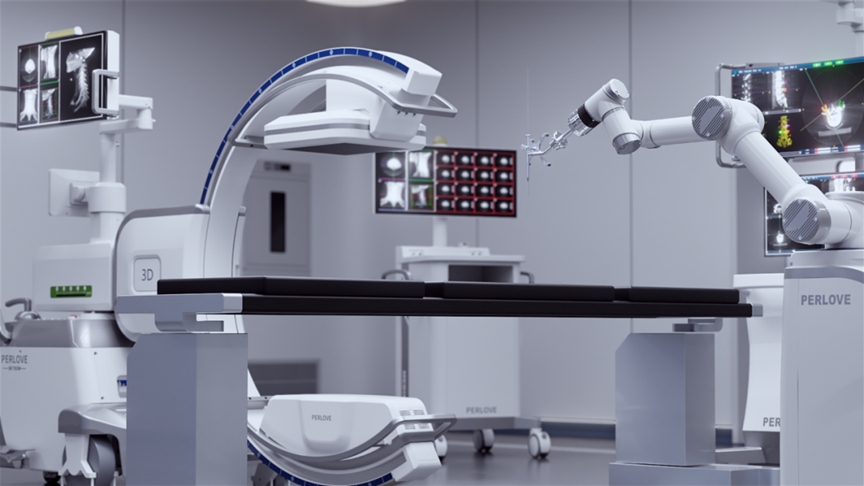
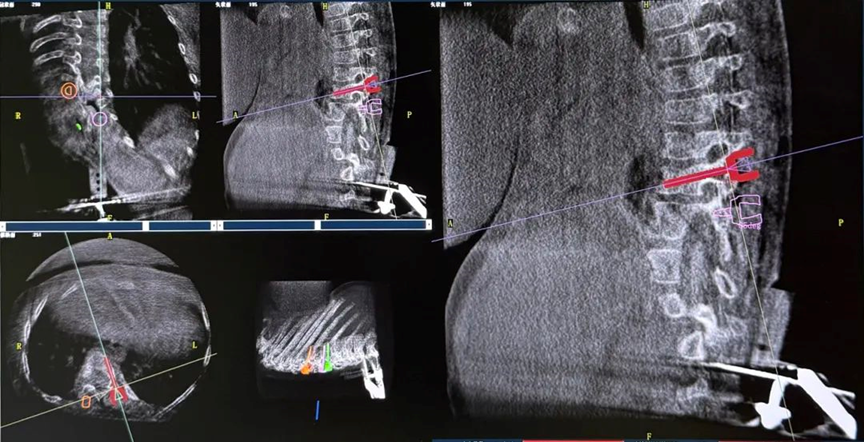
One-time planning for quadruple K-wire insertion
The robotic arm enhanced stabilization of surgical instruments, enabling precise execution. Guided by pre-planned trajectories, the system achieved accurate single-attempt pedicle screw placement within narrow vertebral pedicles - effectively navigating the 'anatomical labyrinth'. This approach eliminated risks associated with repeated positioning attempts. The fully integrated system demonstrated perfect coordination, successfully completing the implantation of four pedicle screws with sub-millimeter accuracy.
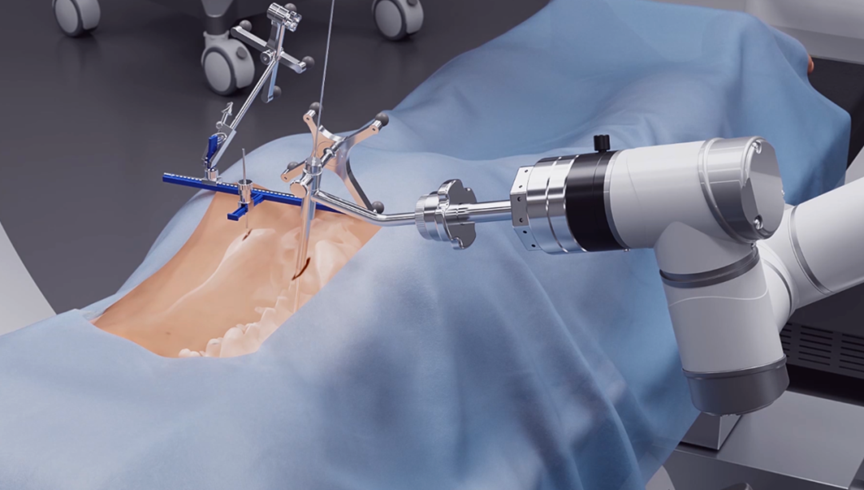

Fluoro-verified precise K-wire insertion

Fluoro-verified precise screw implantation
02 Radiation Safety
Addressing common parental concerns about radiation exposure, traditional K-wire insertion requires separate AP/lateral imaging for each of the four insertion points - with repeated X-ray verification. In contrast, the orthopedic robot utilizes a 'single 3D scan for complete trajectory planning' protocol. When integrated with Perlove Medical's 3D C-arm pulsed fluoroscopy mode, this approach significantly reduces total radiation dosage, effectively mitigating radiation risks.
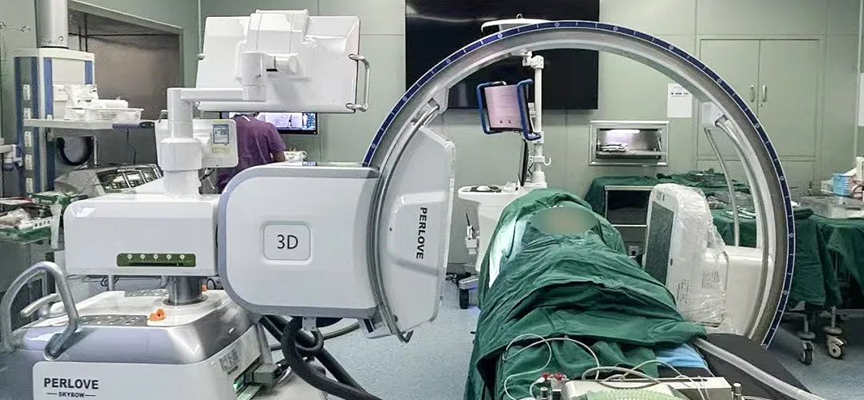
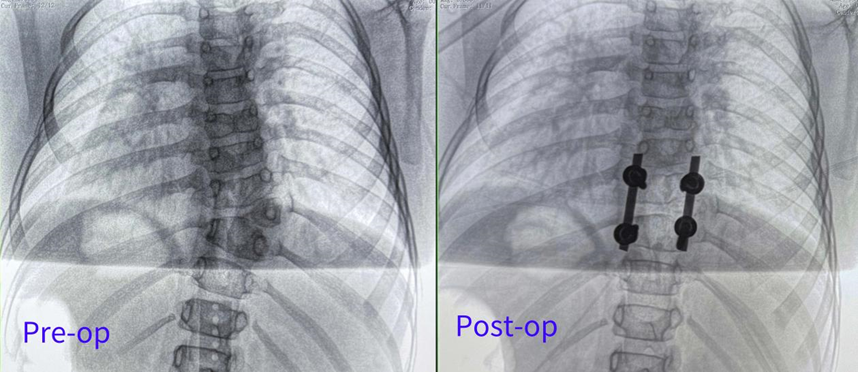
The orthopedic team at Children's Hospital of Nanjing Medical University successfully concluded this challenging procedure through the perfect synergy of surgical expertise and advanced technology. Their achievement not only restored the patient's spinal alignment but also safeguarded her ability to embrace future with confidence.
May this young patient now thrive like any other child, enjoying carefree laughter and pursuing the joyful childhood she deserves.
-
Perlove Medical to Showcase Advanced Imaging Solutions at FIME 2025 in Miami
Read More » -
AIBO Delegation Revisits Perlove Medical
Read More » -
Perlove Medical | CMEF 2025
Read More » -
Application of Interventional C-arm in Esophageal Stricture Stent Placement
Read More » -
The Third-Generation High-End 3D C-Arm Installed in a Tertiary Hospital
Read More » -
Perlove Medical is Exhibiting at CMEF 2025 in Shanghai!
Read More »




